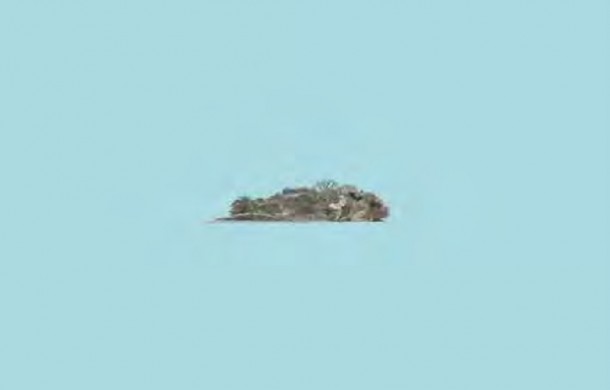CHARLES LIM, SEA STATE 2: AS EVIL DISAPPEARS
| 2013年05月10日 | 发表于 LEAP 19

An islet named Pulau Sejahat, or “Evil Island,” once sat along the northeastern coastline of Singapore. According to folklore, a fierce battle broke out between the Acehnese and the Portuguese in the waters surrounding Pulau Sejahat in the eighteenth century. Despite the staggering size of the Sumatran Acehnese army, their arrows and spears were no match for the Portuguese guns and cannons. Defeated, the Acehnese commander fled to the shores of Pulau Sejahat with a few surviving men, only to find the island too small to hide on. Trapped on the island and surrounded by enemies, the Acehnese commander ordered a group suicide instead of succumbing to defeat. Legend has it that the warriors drew their kris (an asymmetrical dagger and a spiritual object) and drove them through their own hearts. The power from the kris transformed their souls into spirits that were bound to the island for all time. Sightings and supernatural encounters were frequent affairs after, and “Evil Island” was thus named.
Today, Pulau Sejahat is no more. It has been consumed by the neighboring island Pulau Tekong through land reclamation works. Since 1960, Singapore’s land mass has steadily increased by more than 25% annually. “SEA STATE 2: as evil disappears” is the latest edition of Charles Lim’s “SEA STATE” series, which investigates the relationship of Singapore with its surrounding islets and waters through the story of “Evil Island” and its fate. The exhibition features seven new works. Three of these— a diasec print capturing the process of land reclamation, a drawing of “Evil Island” against a pale blue background, and two framed marine charts dated 2000 and 2012 with magnifying screens focused on Pulau Sejahat— welcome us from the center of the gallery. On the wall to the right hangs a diasec diptych, titled SEA STATE 2: as evil disappears, portraying the changing landscape of a landfill. Lim attempts to resist the regular consumption of such documentary photographs by presenting them vertically, prompting us to view these images as more than what they depict: harmonious earth tones interjected by various shades of blue and white.
Next to this is a seven-minute two-channel video showing a man strapped in a bright orange life jacket, bobbing along to the current. Here, man is no master of earth. Instead, SEA STATE 2: drift (stay till now to move) exposes the vulnerable relationship man has with nature. SEA STATE 2: drift (rope sketch), a five-minute single-channel video on the opposing wall, further reinforces the power of nature. We witness how a piece of white rope first laid in a straight line slowly turns and curves, dancing with the sea. These two videos could have been better appreciated if the gallery were larger in size. During the author’s visit, spectators overflowed from the gallery to its foyer; it was difficult not to bump into fellow visitors trying to admire each video. For a similar reason, SEA STATE 2: untitled (study) was almost overlooked. Mounted at the entrance to the gallery’s office, the A5-sized nylon polymer print urged us to focus on the encircling environment of Singapore— instead of on the nation state— in a concave outline of Singapore abutted by convex surrounding seabeds.
Lim offers a compelling exposure of humanity’s impact on its physical environment, highlighting the interplay between the natural and the man-made, between land and sea, between actions and reactions. Marking a body of works that make visible, with stunning clarity, a physical reality that lies hidden around us every day, “SEA STATE 2: as evil disappears” probes the tenuous psychology of the island republic, suggesting that what we try to keep out of sight is bound to come back to haunt us.

